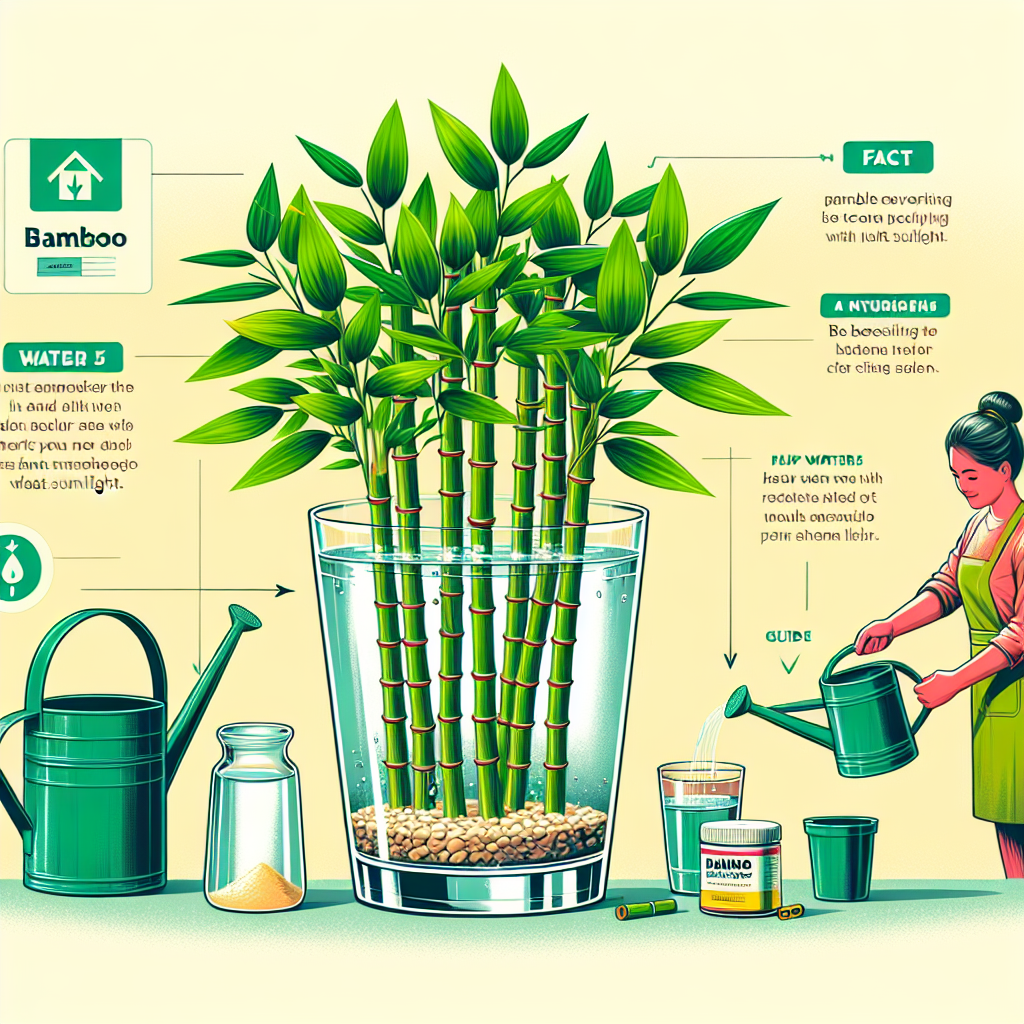
How to care for bamboo in water
How to Care for Bamboo in Water: A Comprehensive Guide
Bamboo has gained immense popularity as a decorative houseplant due to its unique appearance and air-purifying capabilities. One of the simplest ways to grow bamboo is by keeping it in water. While this method can lead to stunning displays, it comes with specific care requirements. Understanding how to care for bamboo in water is essential for ensuring your plants thrive and remain healthy. In this article, we'll explore various aspects of bamboo care—including ideal conditions, maintenance tips, and common issues to expect.
Understanding the Basics of Bamboo
Bamboo is a fast-growing plant that belongs to the grass family, known for its resilience and versatility. Here are some key attributes that make bamboo an appealing choice for indoor gardening:
- Adaptability: Bamboo can thrive in various conditions.
- Low Maintenance: Once established, it requires minimal care.
- Air Purifying: It can improve indoor air quality.
- Aesthetics: The tall, slender stalks add a modern touch to any space.
Ideal Conditions for Growing Bamboo in Water
Before delving into care techniques, it's essential to understand the ideal conditions required for bamboo grown in water:
- Light: Bamboo prefers bright, indirect sunlight but can also adapt to low-light conditions.
- Water Quality: Use clean, preferably distilled or filtered water to prevent algae growth and bacteria.
- Temperature: Bamboo thrives in temperatures between 65°F to 85°F (18°C to 29°C).
- Humidity: Higher humidity levels promote growth and vitality.
Essential Steps for Caring for Bamboo in Water
Step 1: Selecting the Right Container
Choosing the right container is critical for the development of your bamboo. Here are some tips:
- Opt for a clear glass vase to visually monitor water levels and root growth.
- Ensure the container has a wide mouth to accommodate the bamboo's stalks easily.
- Consider adding pebbles or decorative stones at the bottom for support, which also helps anchor the bamboo.
Step 2: Propagating Bamboo
If you already have bamboo and want to propagate it, here’s how:
- Cut a healthy stalk about 6 to 10 inches long.
- Place the cutting in a container with water, ensuring that at least one node is submerged.
- Wait for roots to develop, typically taking 4-6 weeks.
Step 3: Water Management
Water is vital for bamboo’s health, but you must manage it properly. Here’s how:
- Change the water every 1-2 weeks to prevent stagnation and algae growth.
- Keep the water level consistent; adjust as required to ensure the roots are always submerged.
- If using tap water, allow it to sit for 24 hours to let chlorine dissipate before using it.
Step 4: Fertilization and Nutrients
Bamboo requires nutrients for optimal growth:
- Use a diluted liquid fertilizer every 4-6 weeks during the growing season (spring and summer).
- Organic options, such as seaweed extract, can enhance growth and health.
- Avoid over-fertilizing, as this can burn the roots and harm the plant.
Step 5: Pruning and Shaping
To maintain a healthy appearance and encourage growth, regular pruning is vital:
- Trim dead or yellowing leaves to prevent any disease.
- Shape the stalks by cutting back the tallest ones to encourage bushier growth.
- Remove any unwanted branches or leaves to promote airflow around the plant.
Dealing with Common Bamboo Issues
Overwatering and Root Rot
One of the most common problems in growing bamboo in water is root rot due to overwatering. To recognize this issue:
- Look for yellowing leaves or a mushy texture on the roots.
- To prevent this, regularly change the water every couple of weeks.
- If root rot occurs, trim away the affected roots and transfer the bamboo to a clean container with fresh water.
Yellowing Leaves
Yellowing leaves can indicate several problems:
- Poor water quality or lack of nutrients can cause yellowing.
- Too much direct sunlight can also result in leaf discoloration.
- Ensure that you’re using clean water and consider adjusting the bamboo’s location for optimal light.
Pest Infestations
Bamboo can occasionally attract pests:
- Aphids and spider mites are common culprits that drain nutrients.
- Regularly inspect your bamboo and wash it with a gentle soap solution if you notice pests.
The Benefits of Growing Bamboo in Water
Despite the care that bamboo requires, there are numerous benefits associated with this method of growing:
- Decorative Appeal: It makes for an attractive centerpiece.
- Space Saver: Perfect for smaller living areas as it requires minimal space.
- Air Quality Improvement: Helps to purify the air.
- Stress Reduction: The presence of greenery can lower stress levels and increase well-being.
Final Thoughts
Learning how to care for bamboo in water may seem daunting at first, but with the proper knowledge and tools, you can easily cultivate a modern and vibrant plant that enhances your living space. Regular maintenance combined with a keen eye for your bamboo's needs will result in a thriving and lush piece of greenery in your home. Remember to maintain proper water quality, adjust light conditions as needed, and keep an eye out for common pests and issues. By following these guidelines, you can enjoy the beauty and benefits of bamboo in water for years to come.
“Bamboo is like a mirror. It reflects what you do in your life.” — Unknown
By Guest, Published on August 19th, 2024